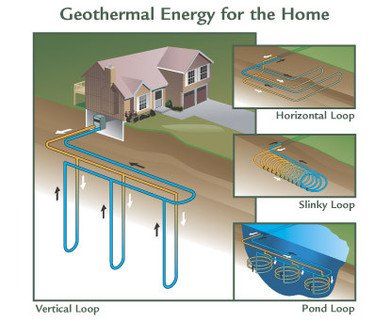Frequently Asked Questions:
Q: How does a geothermal system work?
A: The earth's temperature, a few feet below the surface, varies only slightly year round. Temperatures range from about 45º in northern latitudes to about 70ºF further south. By taking advantage of these constant temperatures, a geothermal system provides extremely efficient heating and cooling. In winter, the pipes (ground loops) that are buried underground circulate a fluid which absorbs heat from the earth. The fluid then carries the heat into the home where the geothermal system uses a heat pump to concentrate the earth's thermal energy. Then, to fill the interior or your home with warmth, the resulting air is circulated through standard ductwork. This process is reversed in the summer. In your home, the heat is removed from the air and is transferred through the heat pump to the ground loop piping. This excess heat is carried back to the earth by the fluid in the ground loop. The minor amount of electricity used to operate the ground loop pump and fan is the only external energy needed for a geothermal system.

